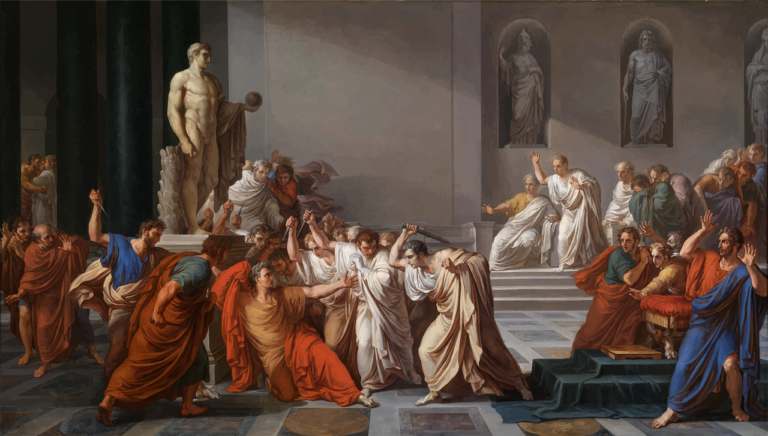
Washington DC is a city filled with iconic architecture, much of which draws inspiration from the classical world. From the domed Capitol Building to the grandiose Lincoln Memorial, many of the city’s most famous landmarks incorporate elements of ancient Greek and Roman styles. But why is it that these styles have come to be so closely associated with American democracy, and what does this say about the role of classical heritage in modern society?
In this blog post, we will explore the history of Greco-Roman architecture in Washington DC, and how it has come to be seen as a symbol of democratic ideals. We will examine the classical legacy of ancient Greece and Rome, and how it has been interpreted and reinterpreted throughout history. Ultimately, we will argue that the use of classical architecture in Washington DC reflects not only an aesthetic preference but also a deep appreciation for the classical heritage and its enduring legacy.
Classical Architecture and Democracy
The classical world of ancient Greece and Rome has been celebrated for centuries as a symbol of intellectual and political achievement. The principles of classical architecture, which were developed by the ancient Greeks and Romans, have been admired and emulated by architects and designers throughout history. These principles include a sense of proportion, symmetry, and balance, as well as a focus on simple, geometric forms.
One of the reasons that classical architecture has come to be associated with democratic ideals is that it emphasizes the concept of “public space.” In ancient Greece, public buildings and spaces were designed to be accessible to all citizens, regardless of social class. This included spaces like the agora, or marketplace, where people would gather to trade goods and ideas. Similarly, in ancient Rome, public buildings like the forum and the basilica were designed to be open and accessible, reflecting the idea that all citizens had a stake in the political and social life of the city.
The emphasis on public space in classical architecture is reflected in the design of many of Washington DC’s most famous landmarks. The Capitol Building, for example, is modelled on the Roman Pantheon, with its impressive dome and grand entrance. The Lincoln Memorial, which features a monumental statue of the 16th President of the United States, draws inspiration from classical temples, with its fluted columns and pedimented roof. These buildings are not only impressive feats of engineering and design, but they also serve as symbols of the democratic ideals that the United States was founded on.
Enlightenment and the Classical Revival
The use of classical architecture in Washington DC is also partly due to the influence of the Enlightenment, an intellectual movement that swept through Europe in the 18th century. The Enlightenment celebrated reason, science, and individual liberty, and rejected the traditional authority of the church and monarchy. It also celebrated the classical world as a model for intellectual and political achievement, and many Enlightenment thinkers saw themselves as heirs to the legacy of ancient Greece and Rome.
One of the key figures of the Enlightenment was the French philosopher and writer Voltaire, who championed the classical world as a model for rational thought and critical inquiry. In his writings, Voltaire praised the democratic ideals of ancient Greece and Rome, and argued that their legacy could serve as a guide for contemporary society. He was not alone in his admiration for the classical world, and many Enlightenment thinkers drew inspiration from the principles of classical philosophy and architecture.
The influence of the Enlightenment on the use of classical architecture in Washington DC is evident in the city’s layout and design. The city’s streets and avenues were planned by the French engineer Pierre Charles L’Enfant, who was inspired by the rational principles of Enlightenment thought. The city’s public buildings, such as the White House and the Capitol Building, were designed to reflect the ideals of classical architecture, with their grandiose facades and impressive columns.
Classical Architecture and National Identity
The use of classical architecture in Washington DC also served a symbolic function, representing the values and ideals of the United States. The Capitol Building, for example, was designed to be a symbol of the nation’s legislative authority and the power of the people. The building’s grand entrance, with its impressive dome and portico, represents the openness and accessibility of American democracy.
Similarly, the Lincoln Memorial, which was built in honour of the 16th President of the United States, is a symbol of the nation’s commitment to freedom and equality. The statue of Lincoln, with its imposing presence and powerful gaze, represents the strength and resilience of the American people. The classical design of the memorial, with its grandiose columns and marble steps, reinforces this sense of grandeur and importance.
Critiques of Classical Architecture
Despite its enduring popularity, classical architecture has not been without its critics. In recent years, some architects and scholars have argued that the use of classical forms and motifs is outdated and exclusionary. They argue that the emphasis on symmetry and proportion can lead to a sense of rigidity and conformity, and that the focus on classical styles can exclude other cultural traditions and perspectives.
In response to these critiques, some architects have sought to incorporate elements of non-classical styles into their work, or to create new forms of architecture that break with traditional conventions. They argue that architecture should reflect the diversity and complexity of contemporary society, rather than simply emulating the forms of the past.
Conclusion
The use of classical architecture in Washington DC reflects a deep appreciation for the classical heritage and its enduring legacy. It represents the values and ideals of American democracy, and serves as a symbol of the nation’s commitment to freedom, equality, and civic engagement. While the use of classical forms and motifs may not be suitable for every context, it remains a powerful and enduring form of architecture that has shaped our understanding of the built environment for centuries. As we continue to navigate the challenges of the 21st century, we must continue to reflect on the role of architecture and its relationship to our cultural traditions and values.

